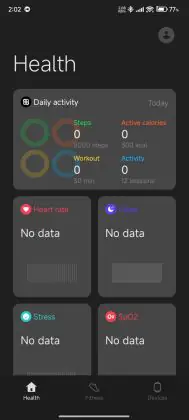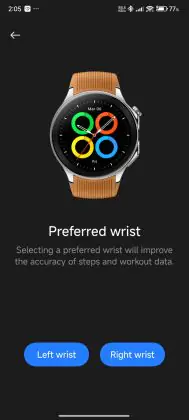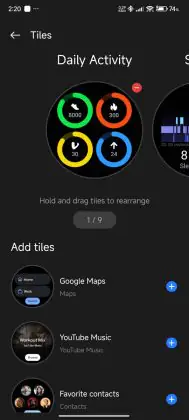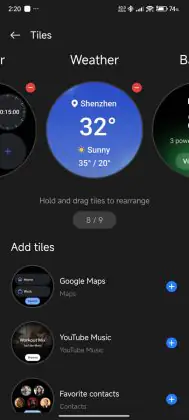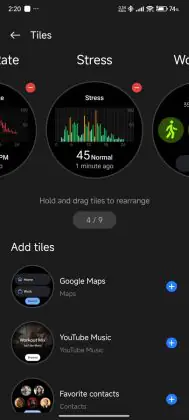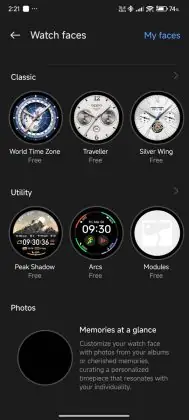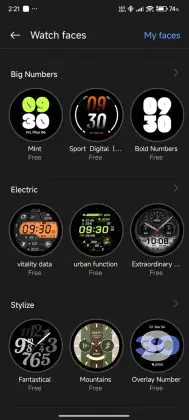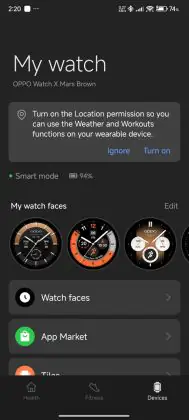© ROOT-NATION.com - Use of content is permitted with a backlink.
Flagship devices always face a tough challenge: they have to excel in everything—except the price, which is always “flagship-level.” However, the Oppo Watch X has an additional task: to be the flagship smartwatch of 2024. Has this model lived up to expectations? Is it worth the money? Let’s dive in and find out.
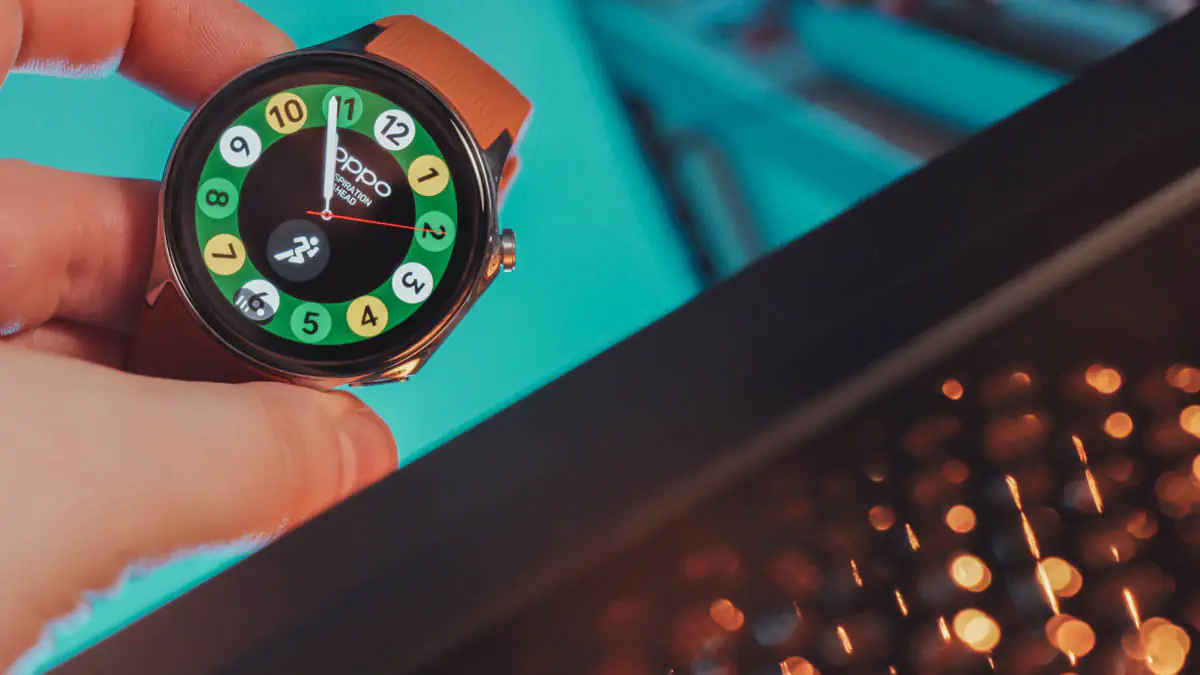
Technical characteristics, price
- Strap: Fluorocarbon rubber + steel clasp
- Case: Stainless steel
- Case bottom: Plastic (PCPC + fiberglass) + Two-color injection molding
- Wrist size: 140-210 mm
- Screen size: 1.43 inches
- Panel: AMOLED
- Pixel density: 326 PPI
- Resolution: 466×466 pixels
- Standard maximum brightness: 600 nits
- High Brightness Mode (HBM): 1000 nits (support for the function will appear by the end of 2024 via OTA)
- Protective glass: 2.5D sapphire crystal glass
- Size: 47.0×46.6×12.1 mm (includes 13.65 mm PPG sensor)
- Case weight: approx. 49 g (without wrist strap)
- Entire structure: approx. 80 g (including wrist strap)
- Battery: 500 mAh
- Battery life during standard use in smart mode: 100 hours
- Battery life with active use in smart mode: 48 hours
- Battery life in power saving mode: 12 days
- Fast charging: 10 minutes of charging for 24 hours of use
- VOOC Flash Charge: 100% in 60 minutes
- Processor: Snapdragon W5 Gen 1
- MCU (microcontroller): BES2700BP
- Memory: 2/32 GB
- WiFi: 5G/2.4G, support 802.11 a/b/g/n
- Bluetooth version: 5.0, Bluetooth Low Energy, support HFP v1.6, HSP v1.2, A2DP v1.3, AVRCP v1.6 SPP v1.1 and higher
- NFC: Supported
- GPS: Dual band L1 + L5, Beidou, GPS, Galileo, GLONASS, QZSS
- Protection: MIL-STD-810H, IP68
- Operating system: Wear OS 4 + RTOS
As I mentioned earlier, the Oppo Watch X is the flagship from a company that more frequently produces fitness trackers across a wide price range.
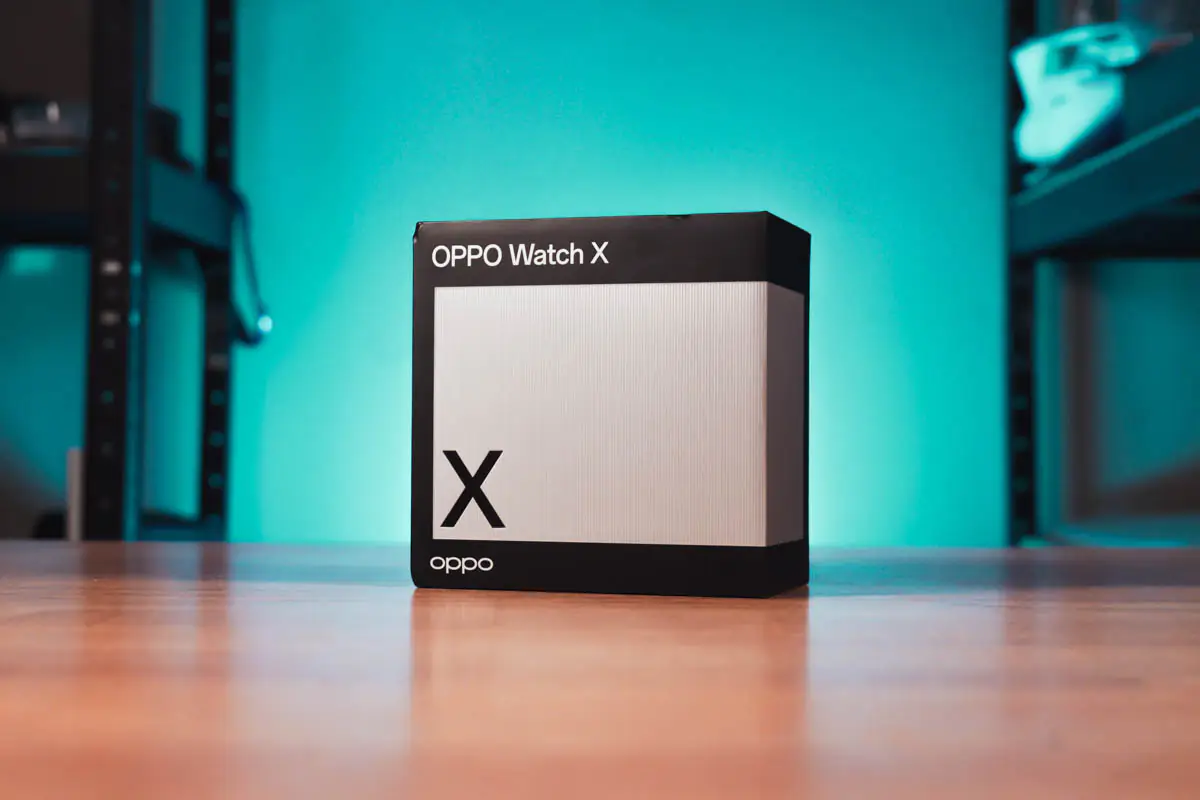
However, the company currently has two relevant models: the Oppo Watch X, priced at $390/€360, and the Oppo Band 2, priced at $65/€60.
Package contents
The first thing I’ll say about the flagship is that it comes with a premium package. It feels and looks luxurious right out of the box.
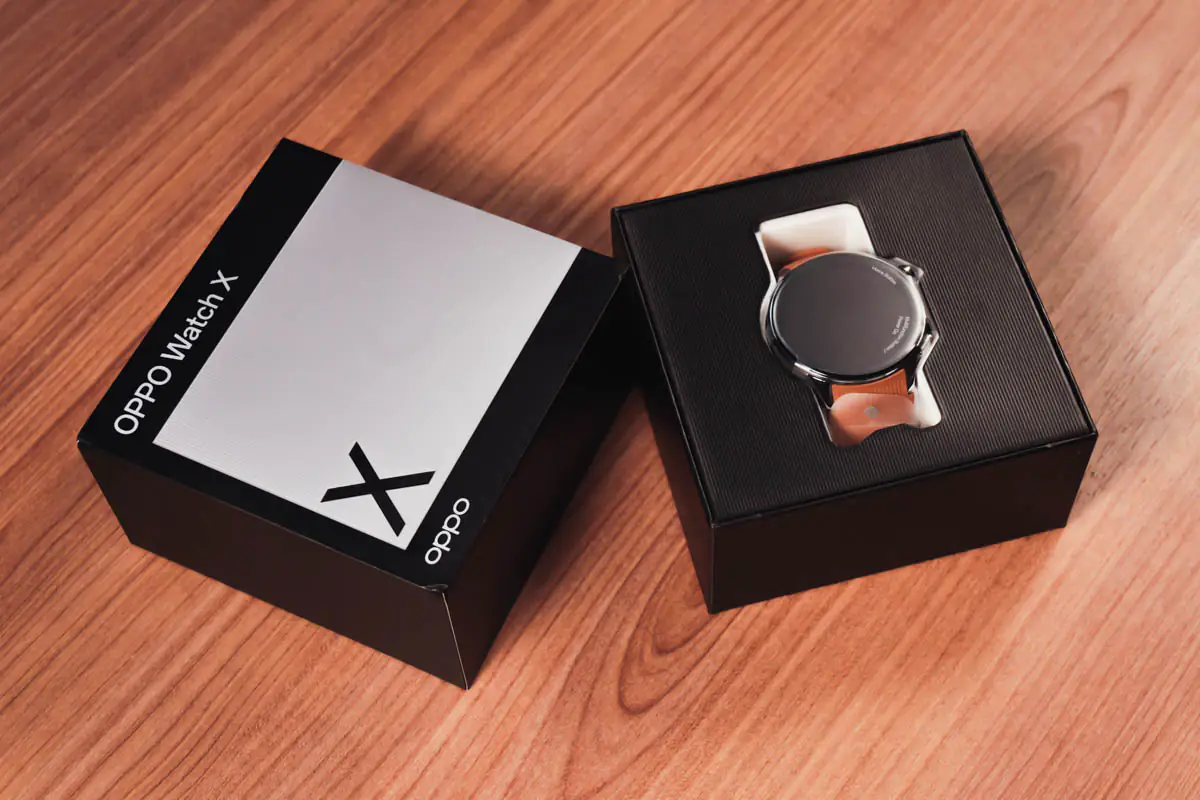
Inside the box, you’ll find the smartwatch itself, along with a charging platform, a Type-A to Type-C cable, and a user manual and safety instructions.
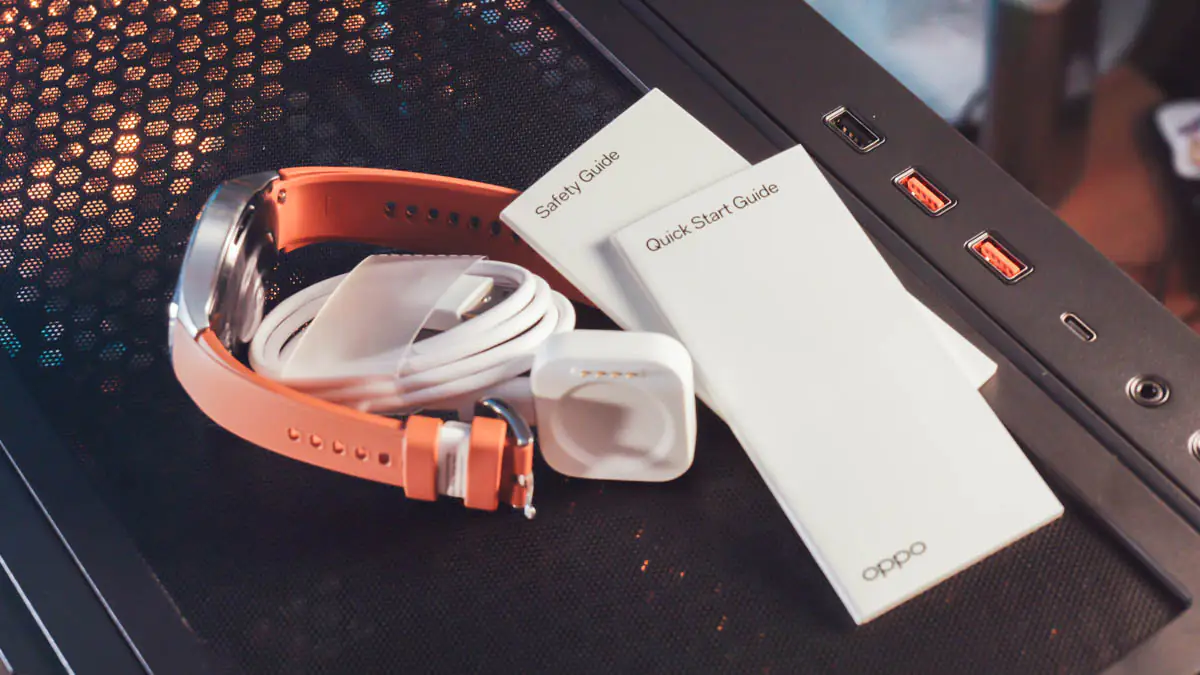
Specifications
From an internal configuration standpoint, the Oppo Watch X is particularly intriguing. This smartwatch operates on two different operating systems, each powered by its own SoC. The primary operating system, Google’s Wear OS, runs on the Snapdragon W5 Gen 1 system-on-chip.
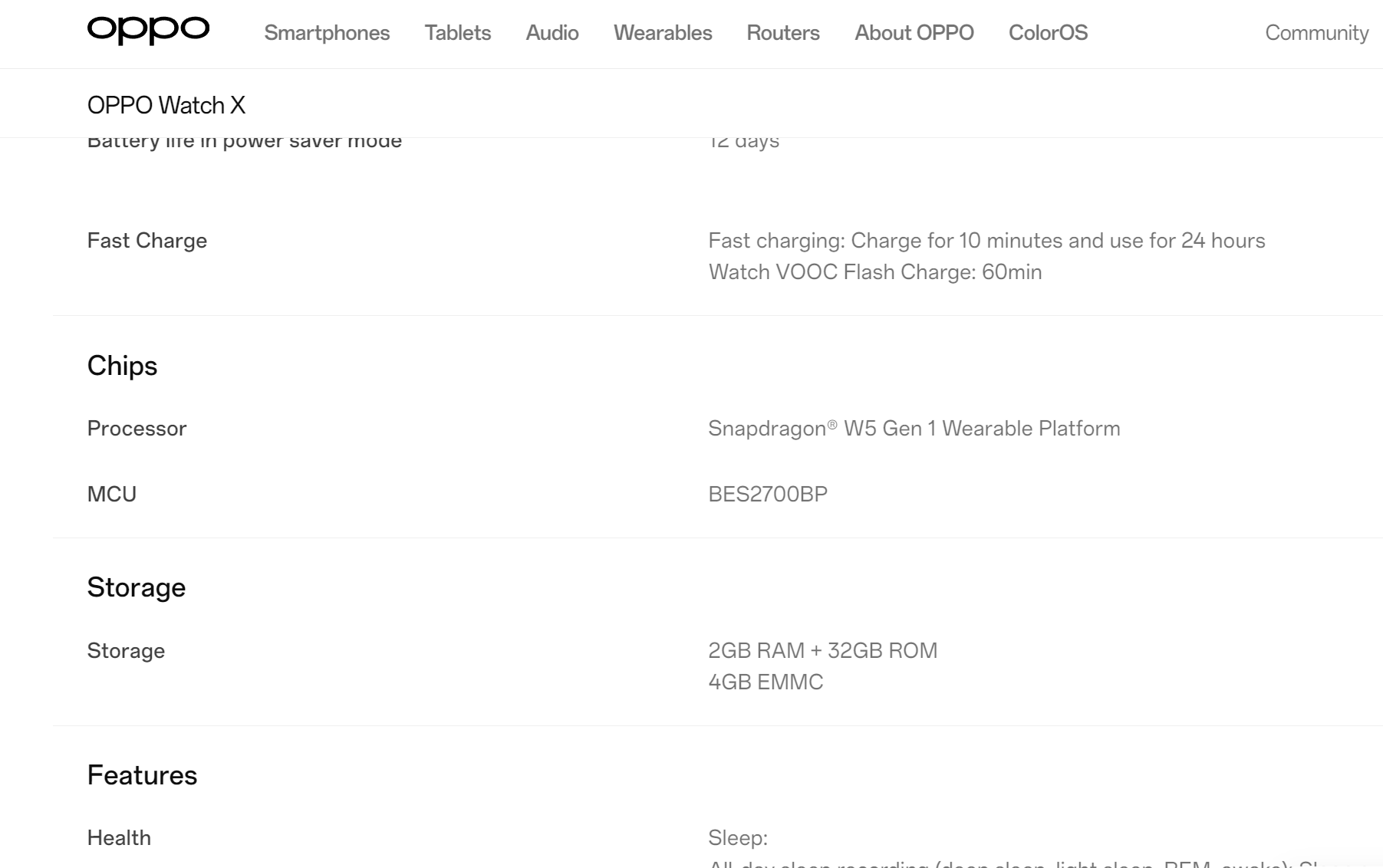
The separate RTOS (Real-Time Operating System) used for continuous background tasks, data exchange, and more is powered by the Bestechnic BES2700BP. The RTOS is allocated 4 GB of eMMC memory, while the Wear OS has 32 GB of faster memory. The smartwatch also comes with 2 GB of RAM.
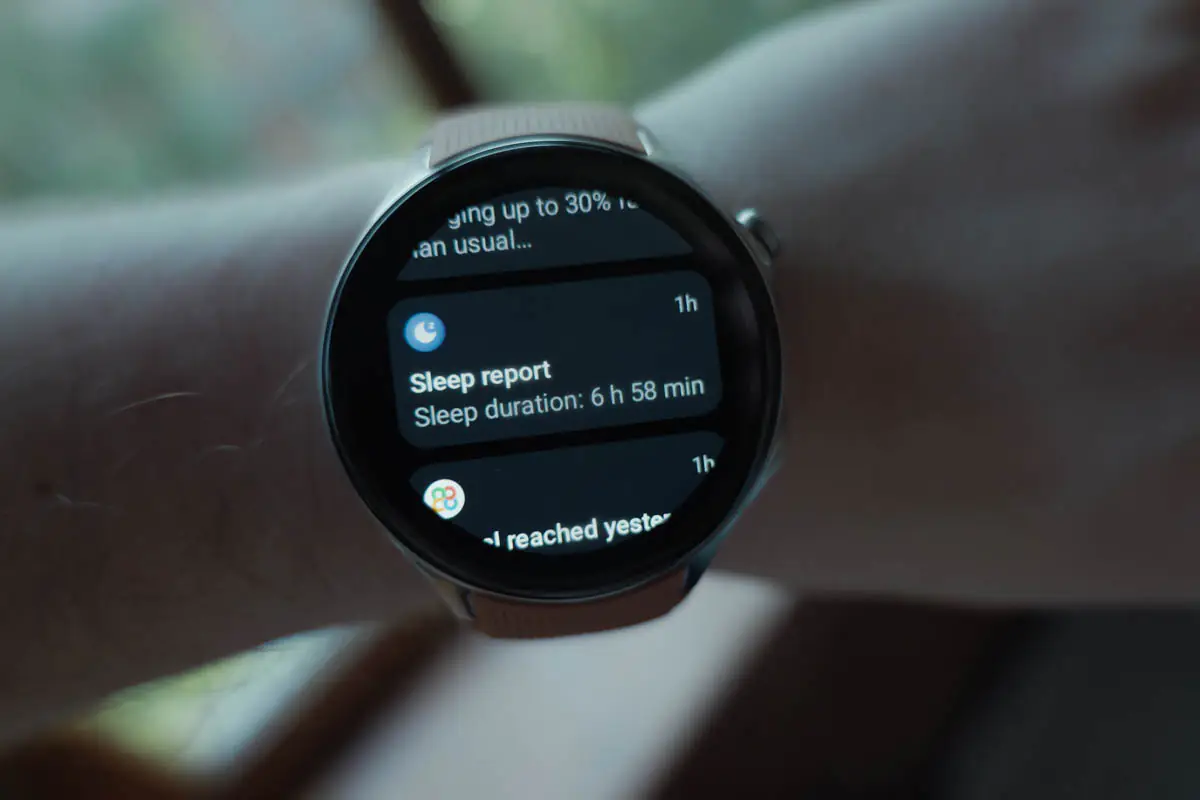
Overall, I can’t say anything negative about the performance speed. The Oppo Watch X operates smoothly and quickly, with no noticeable delays. As for notification delays, I can only mention that on my Xiaomi device, they arrived slower than on the Oppo Watch X.
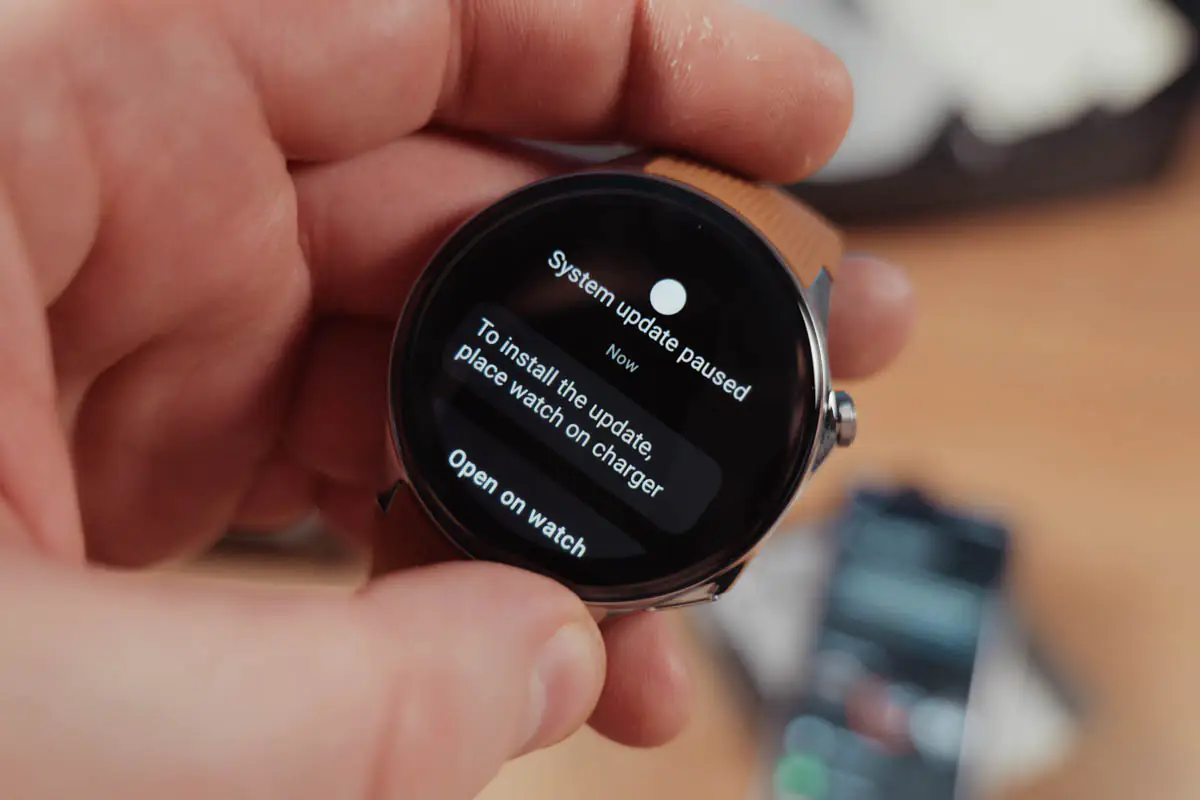
Whether it’s an advantage of Wear OS or a drawback of HyperOS is up for debate, but I’ll have a few more words to say about my dissatisfaction with the latter. Overall, I have no complaints about the Oppo Watch X, particularly regarding its interface.
Oppo Watch X design
I haven’t reviewed smartwatches in a while, so I’ve lost some sense of current trends. However, both then and now, I evaluate the design based on how closely it resembles traditional watches. These can vary widely in appearance, but they share certain common characteristics. When I say “traditional mechanical watch with a single dial,” I imagine something more like the Oppo Watch X, rather than an Apple Watch.
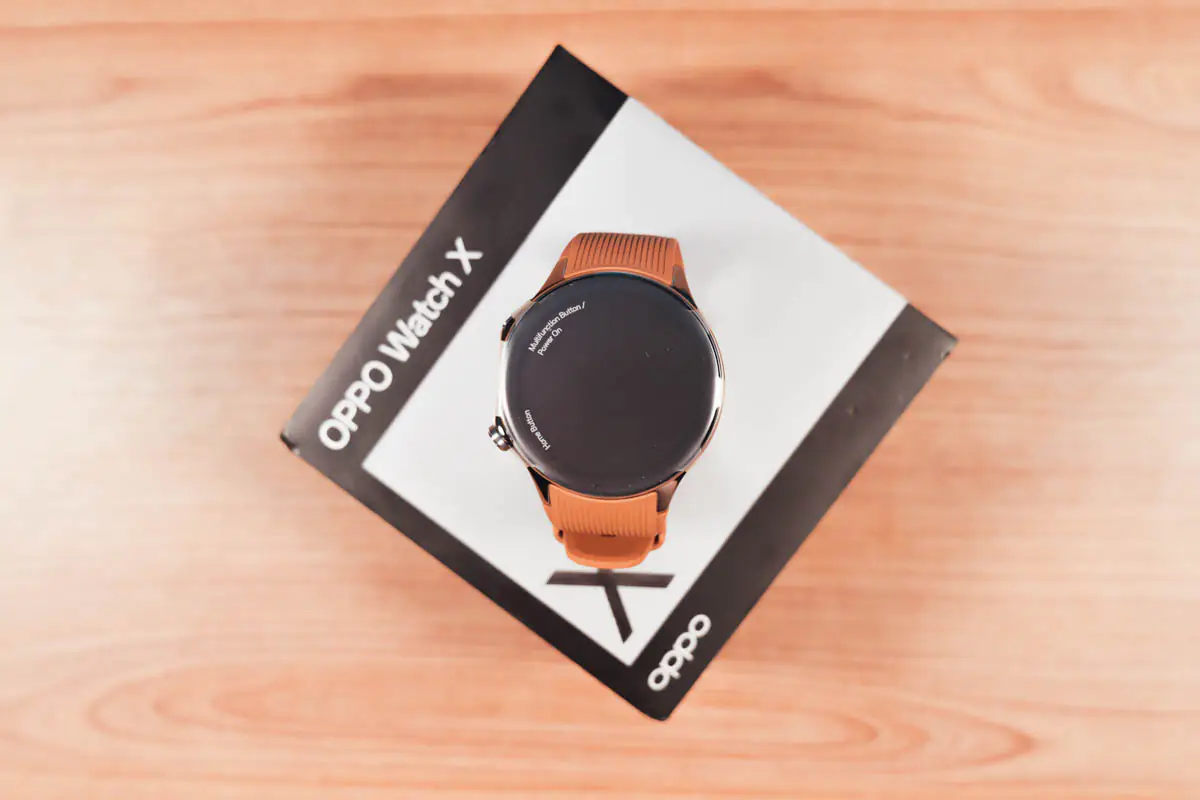
So, a round dial, a smooth shape, a functional button next to a rotating and pressing button. The dial doesn’t rotate, the metal is polished, and the oleophobic coating on the sapphire glass screen is of good quality, so the watch slowly but surely slides off surfaces that are even slightly tilted. Believe me, photographing it was much harder than I anticipated.

By the way, on the underside, there are quite a few sensors and the charging contacts. The charging is magnetic, and the magnet is strong enough that the watch stayed attached to a vertical surface.
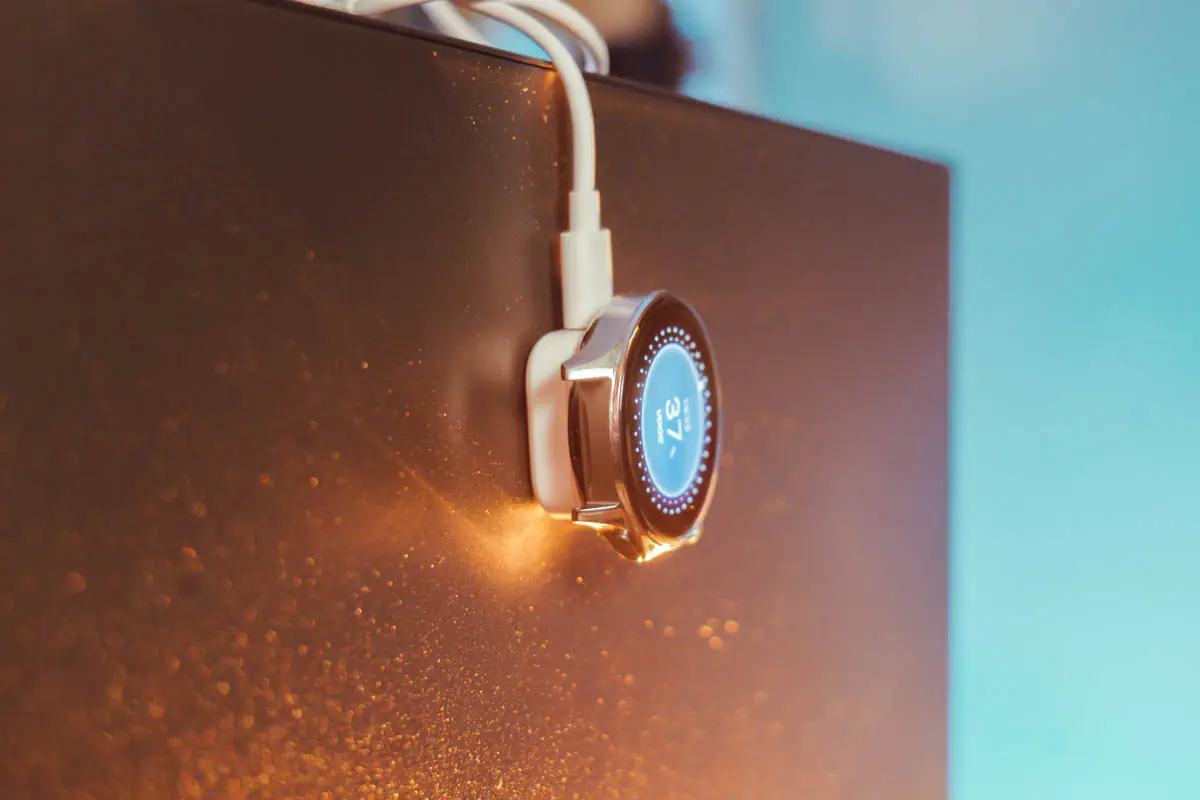
The charging mechanism also appears to be proprietary, but I recently learned that such chargers are usually standardized in size. For the Oppo Watch X, it uses a 4-pin setup.
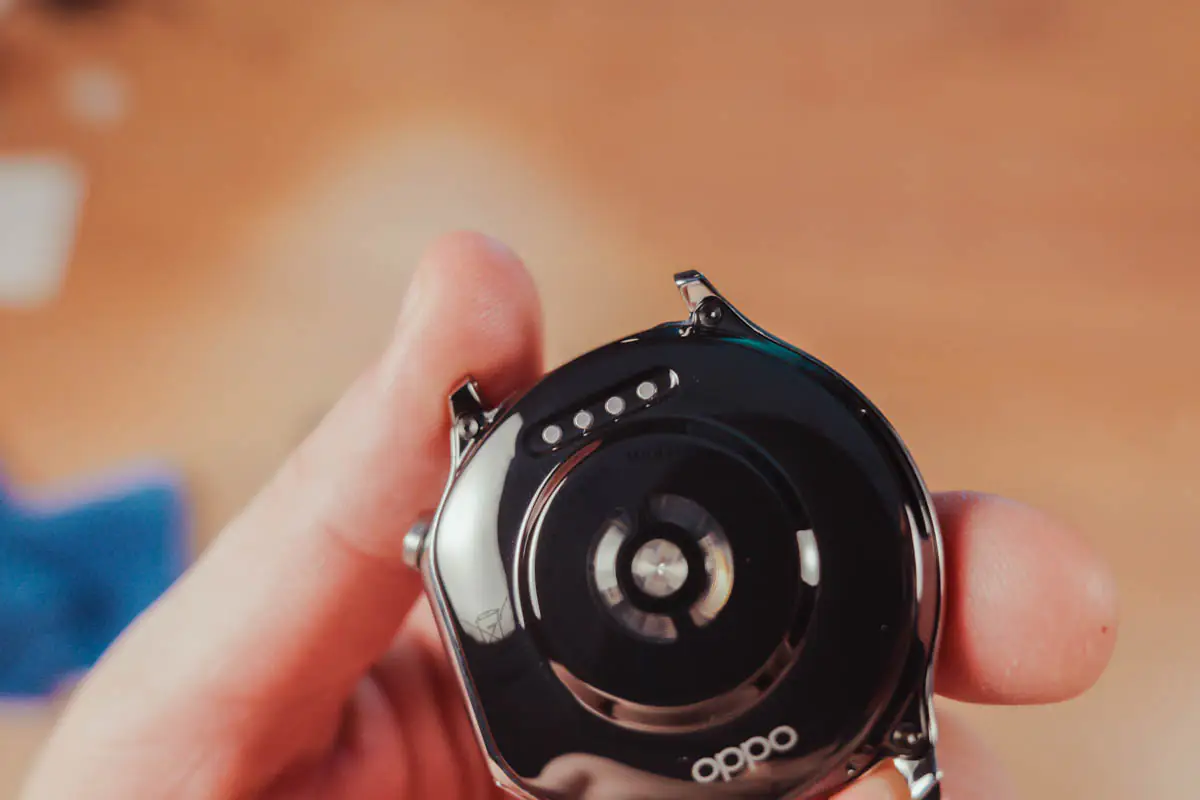
If I’m correct, losing the standard charger won’t be a problem—universal 4-pin magnetic chargers are available on AliExpress, often in the form of keychains. A 4-pin cable costs a little over $1. The only potential issue might be the measurements of the width, but this information is usually provided, and you just need to check the dimensions of the pins on your charger.
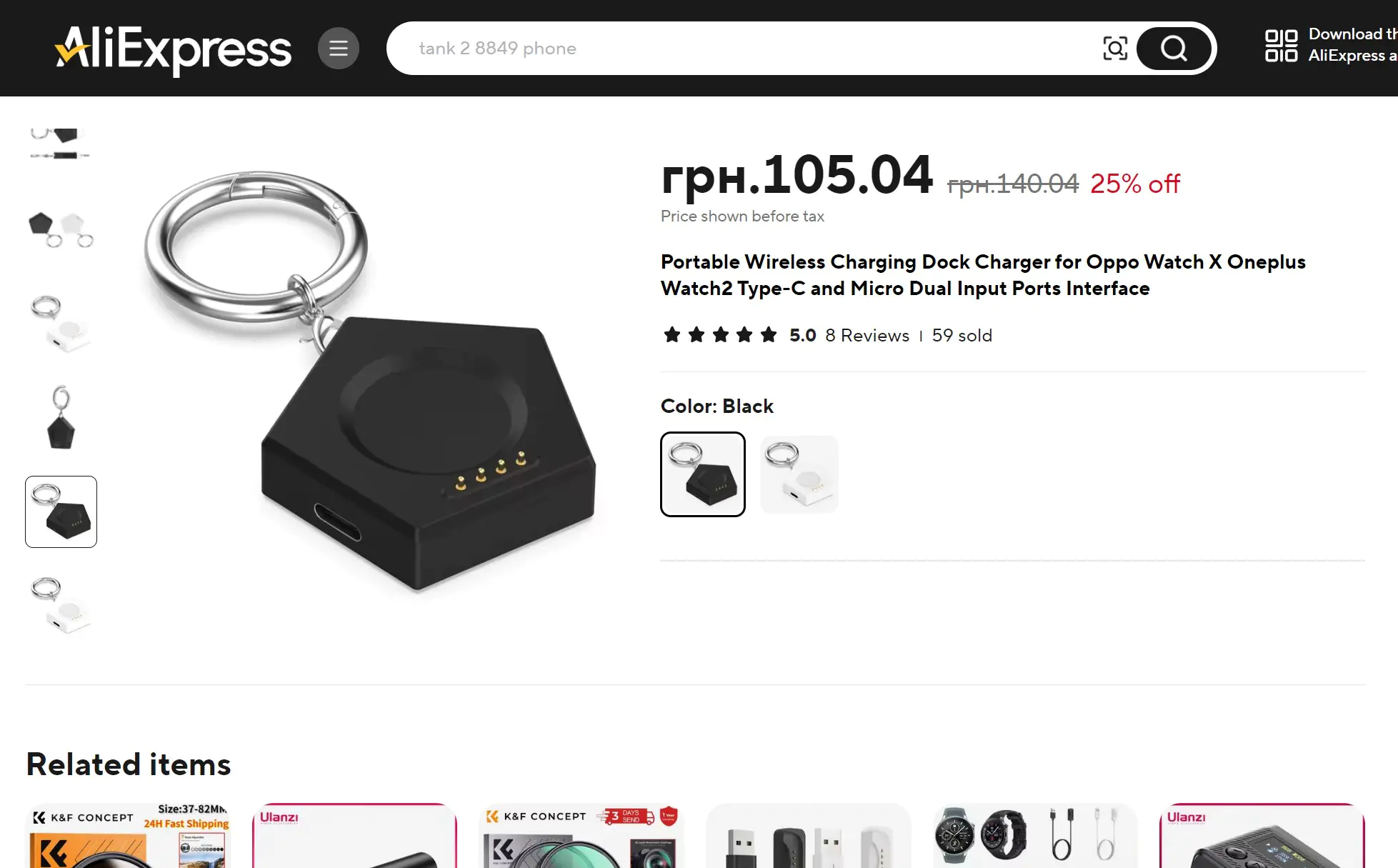
However, the standard charger has an advantage—support for VOOC Flash Charge technology, which means 10-watt charging. This is twice as fast as the peak speed of 99% of devices that support magnetic charging. For example, my bone conduction headphones only support a maximum of 5 watts.
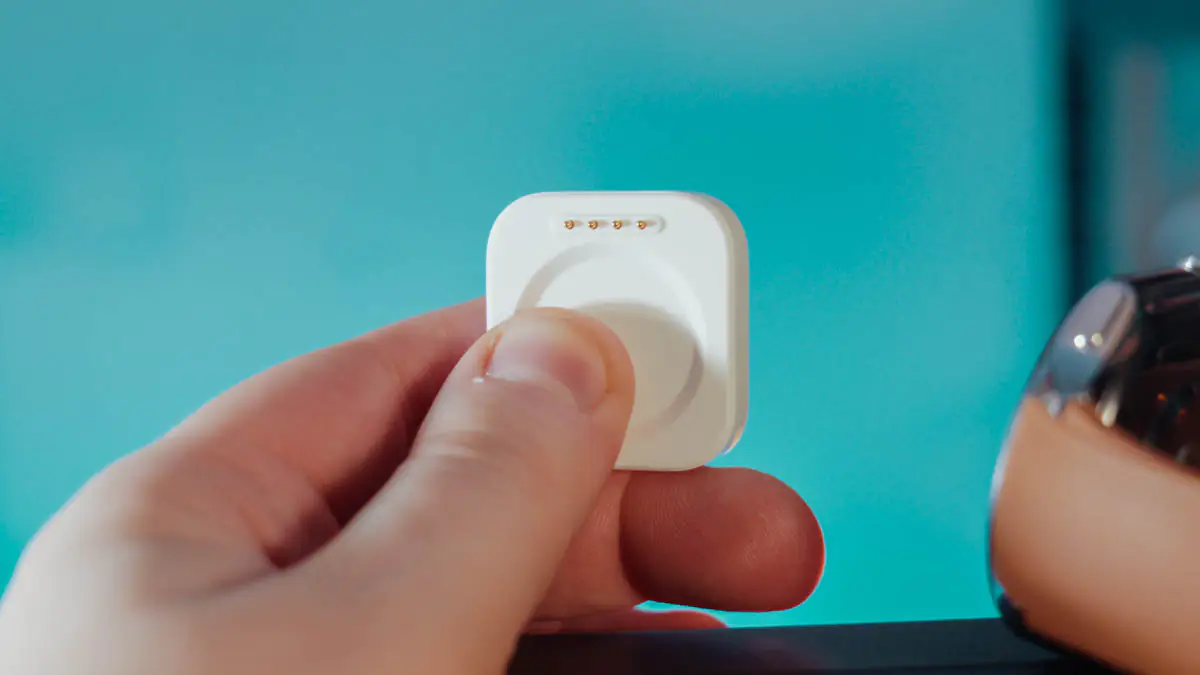
The strap on my model turned out to be brown and fits wrist sizes from 140 to 210 mm. I initially thought it was silicone, but it’s actually made from fluororubber, or FKM. It’s significantly more durable than silicone, less prone to tearing, but it doesn’t handle temperature extremes as well. It’s designed to operate within a range of -20 to 250 degrees Celsius, while silicone can withstand temperatures from -50 to 230 degrees Celsius.
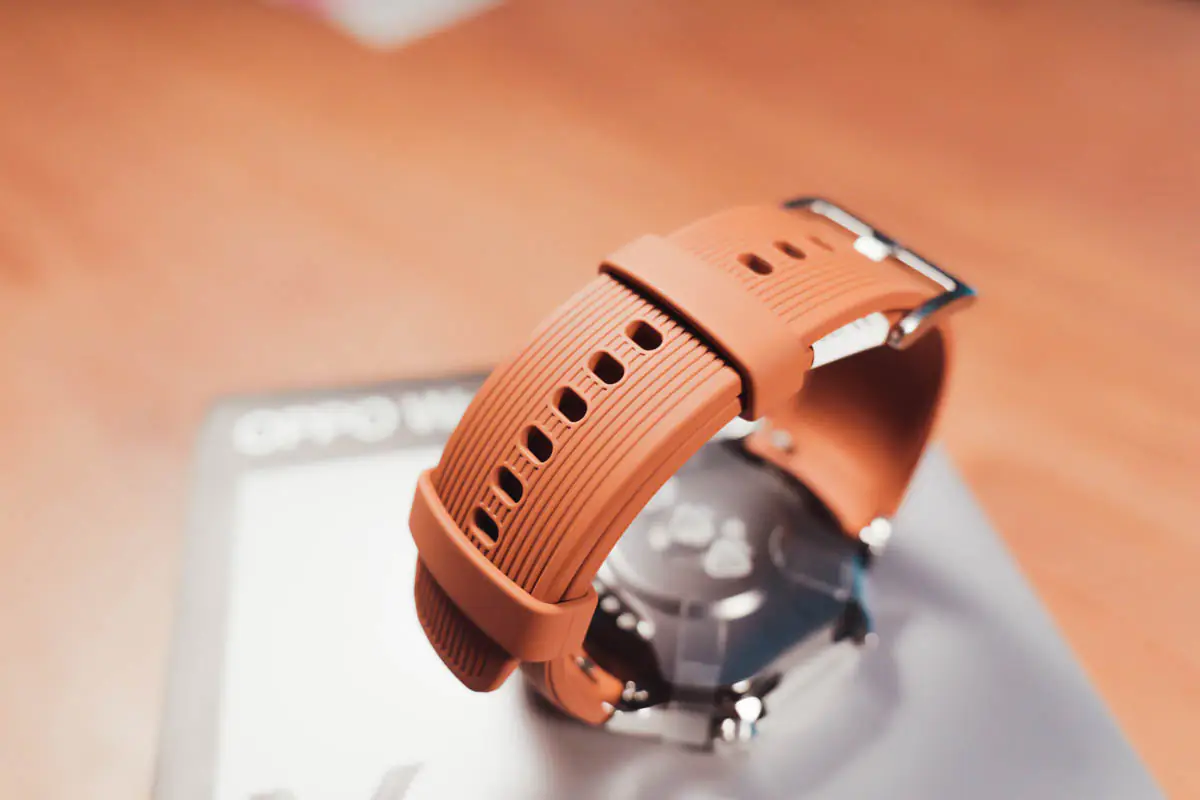
Technically, this strap is considered a sports strap and has a standard size of 22 mm, so finding any replacement strap should be straightforward. This is personally useful for me, as even at +25 degrees Celsius, I experience skin irritation from silicone straps. The fluororubber feels the same. And I had to test it in temperatures up to +40 degrees Celsius.
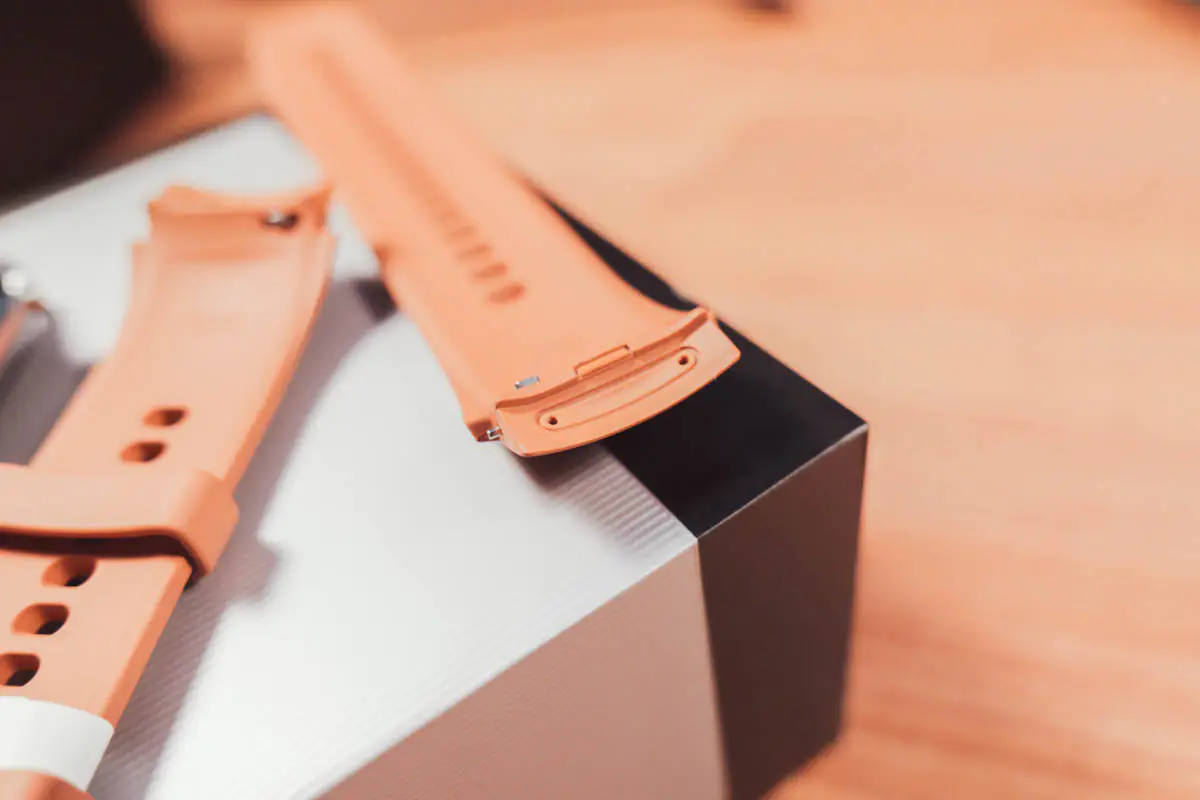
So, I recommend considering a leather strap in advance. I should also mention that the Oppo Watch X is available in both black and white colors. The case material is stainless steel in either case.
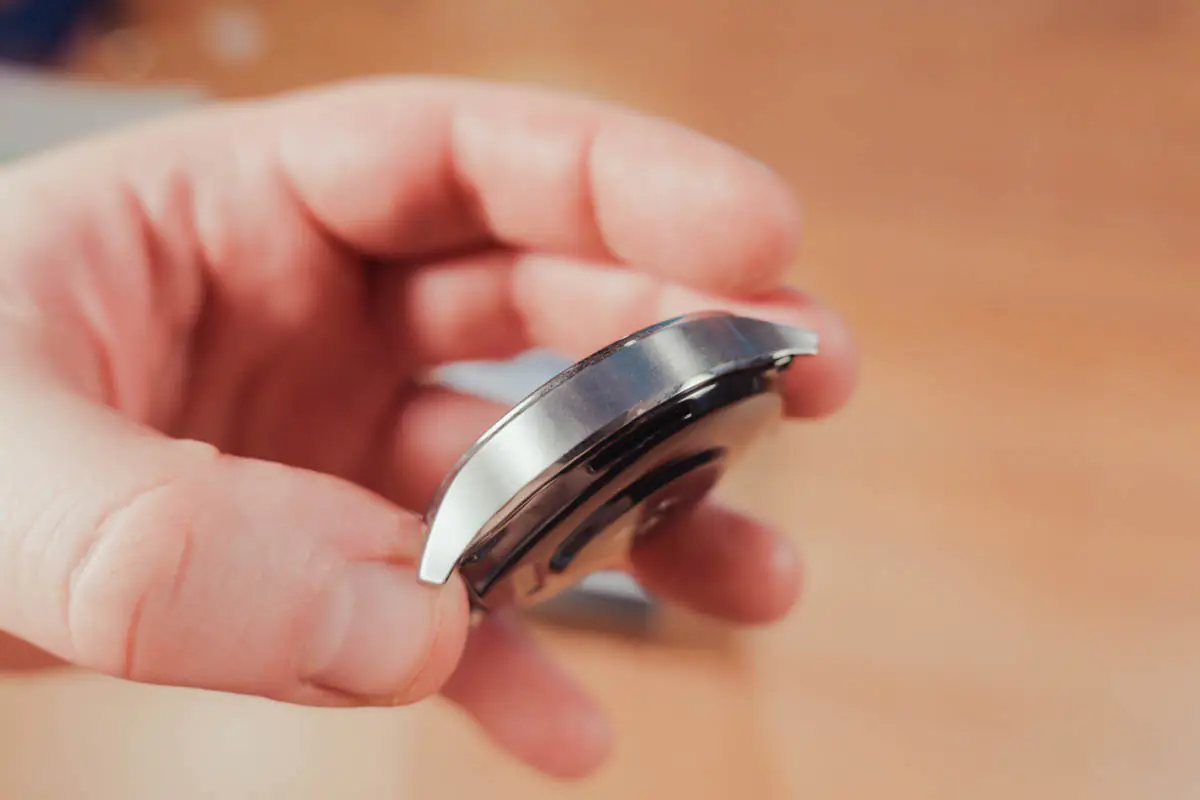
The dimensions of the watch are 47.0×46.6×12.1 mm, and it weighs approximately 80 grams, with the watch itself weighing 49 grams. The case is also protected to MIL-STD-810H standard, IP68, and can withstand pressure up to 5 atmospheres.
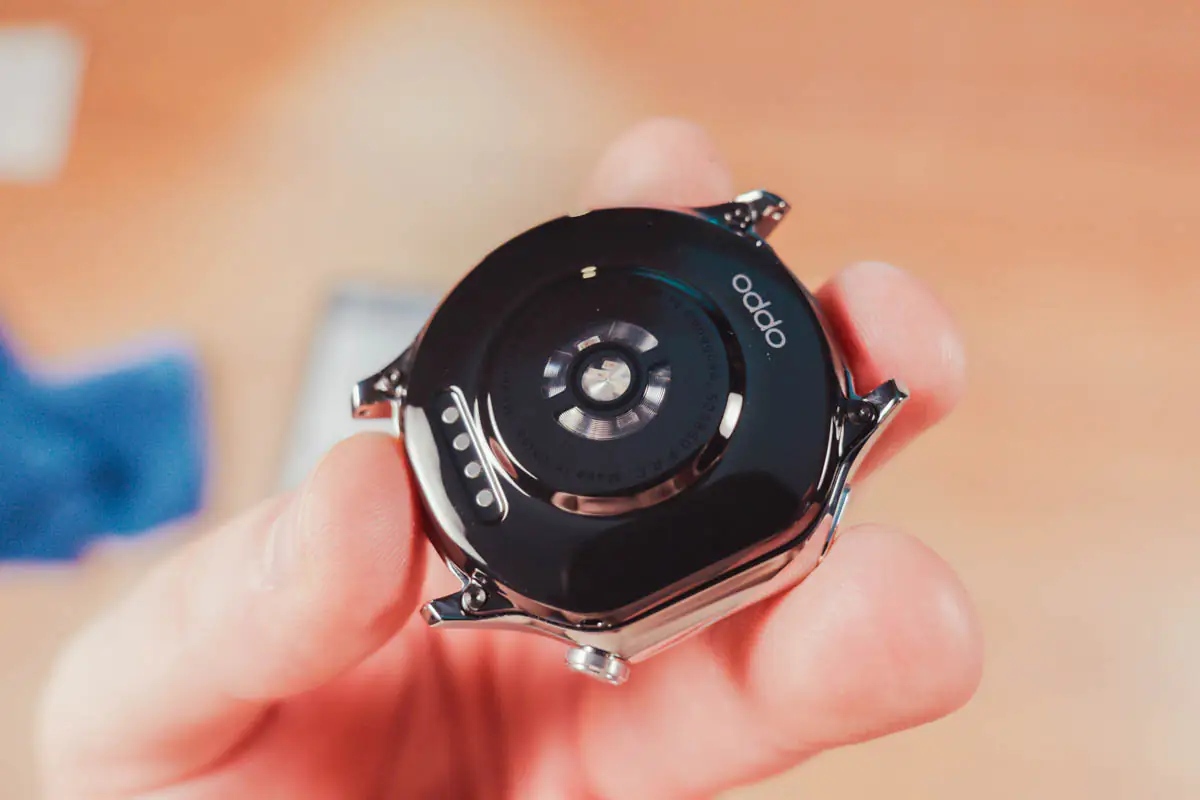
Display
The Oppo Watch X features a 1.43-inch AMOLED display with a resolution of 466×466 pixels and a pixel density of 326 PPI. The maximum brightness is up to 600 nits, but the website claims that after an update throughout 2024, the maximum brightness will increase to 1000 nits. It also includes auto-brightness and Always On Display support, with a refresh rate of 60 Hz.
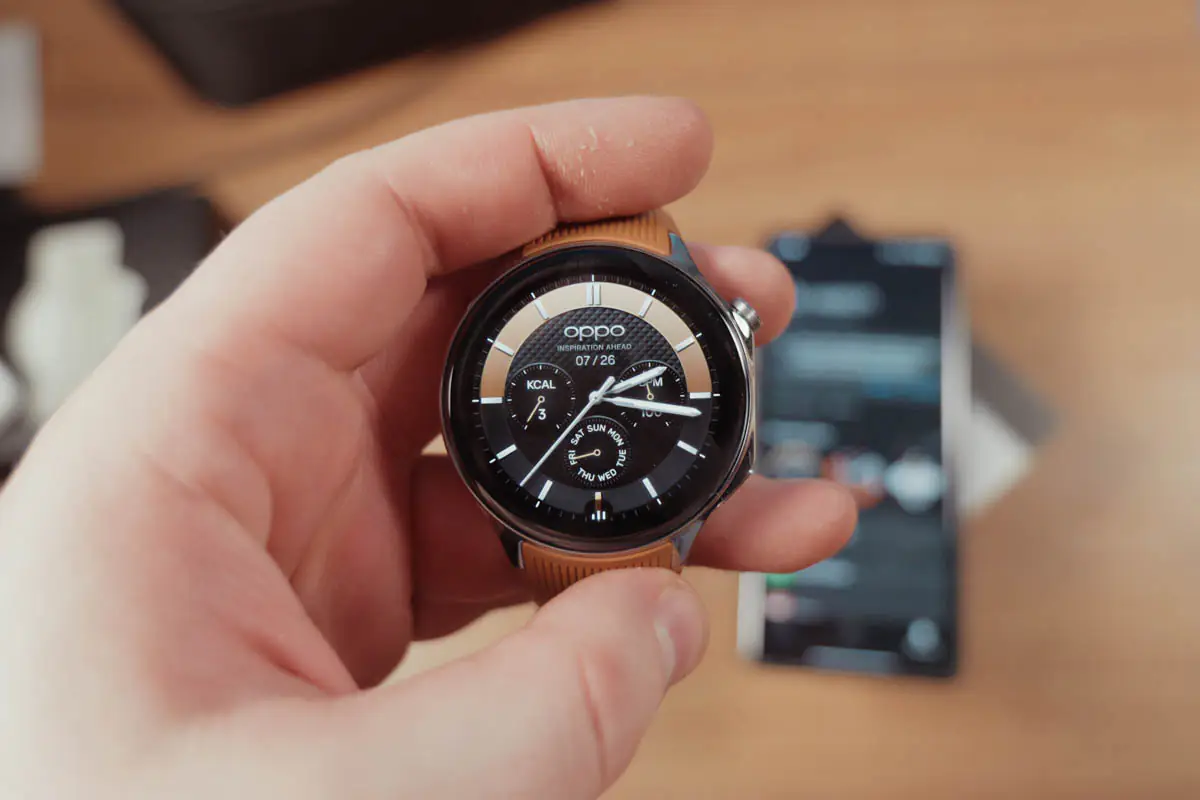
The display looks excellent, remaining readable even in sunlight with a brightness of 600 nits. The wrist shake activation mode works well too. I personally use this mode instead of a flashlight on my smartphone—even with a dark theme, the brightness is sufficient to navigate around the apartment at night.
Shell
The Oppo Watch X runs on Google’s Wear OS, although other sources mention ColorOS. In reality, just like the simpler Oppo Watch, the X version operates on a blend of both. Technically, the watch offers all the benefits and features of Wear OS, but with the look and aesthetics from Oppo.
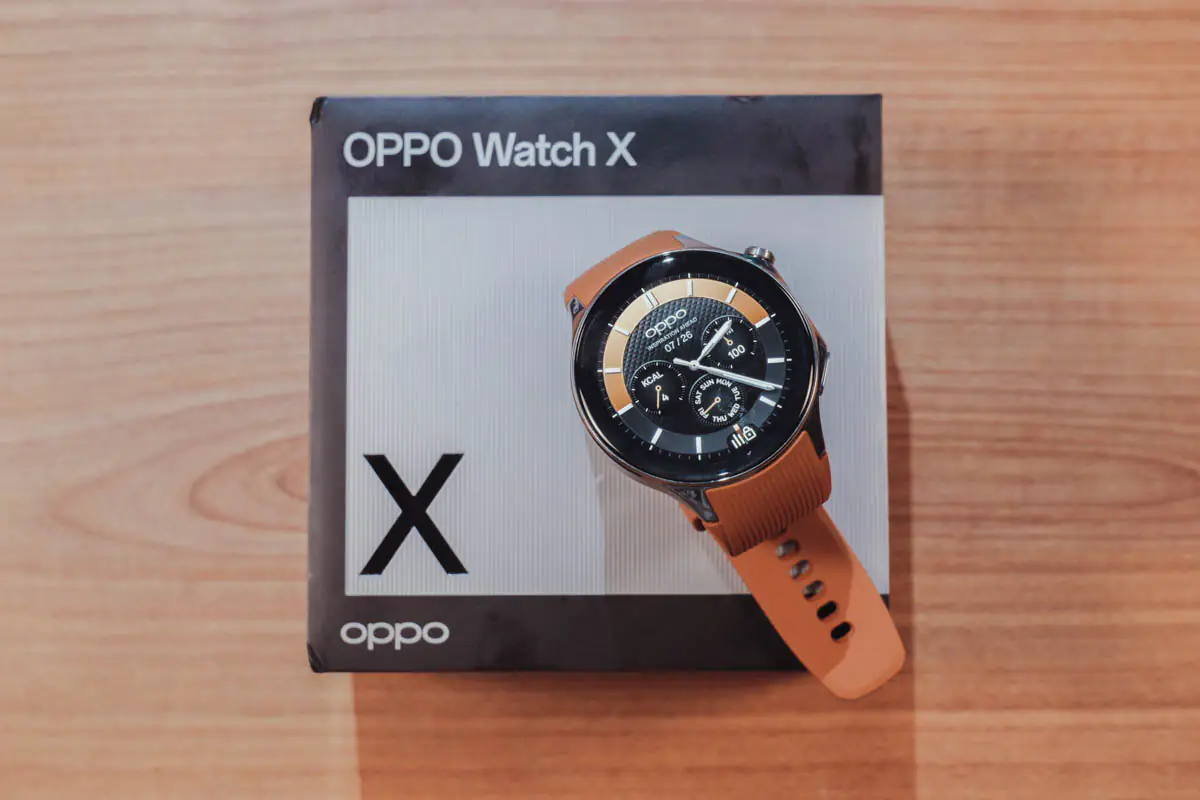
The key factor here is Wear OS. This is what distinguishes many fitness bands that mimic smartwatches from actual smartwatches. In addition to basic notifications, the smartwatch allows for making calls, responding to messages, listening to music, using GPS, Wi-Fi 5, and Bluetooth 5.0, effectively making it a mini smartphone.
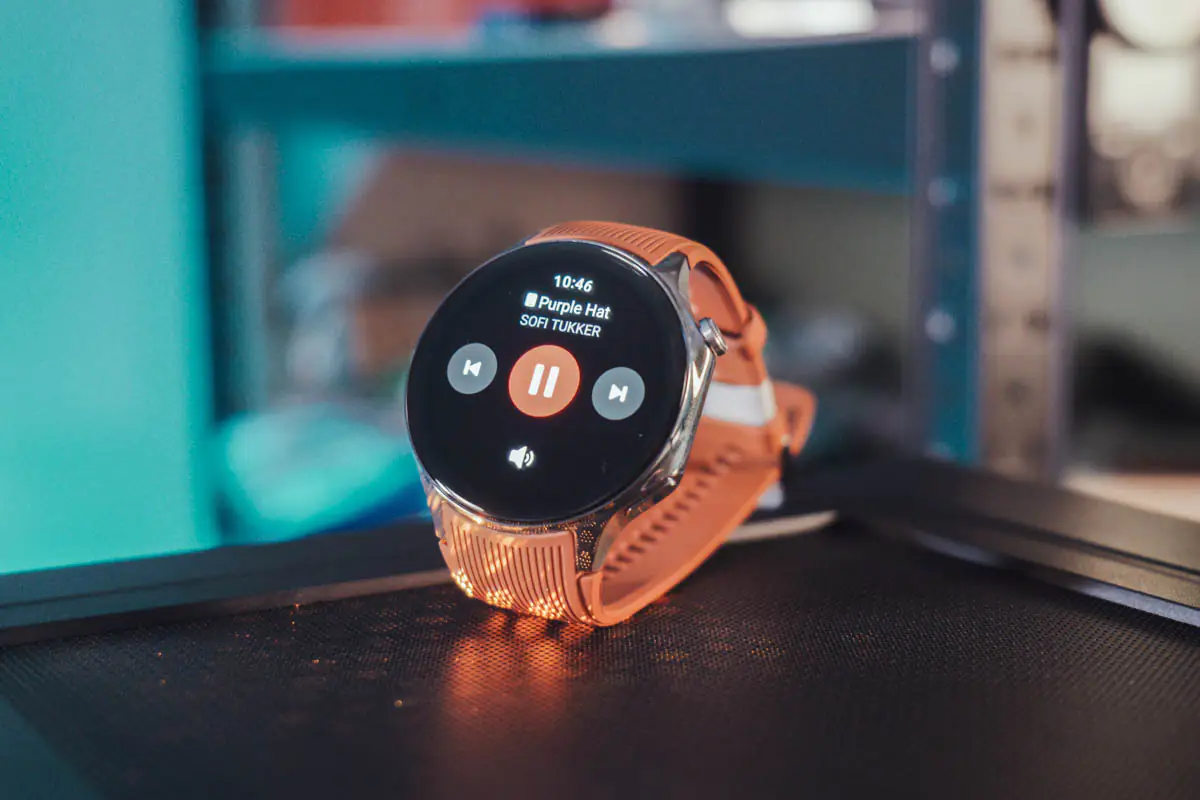
Unfortunately, I don’t have information about eSIM support. News about the Oppo Watch X release mentioned eSIM, but all official websites state that 4G/5G support is absent.
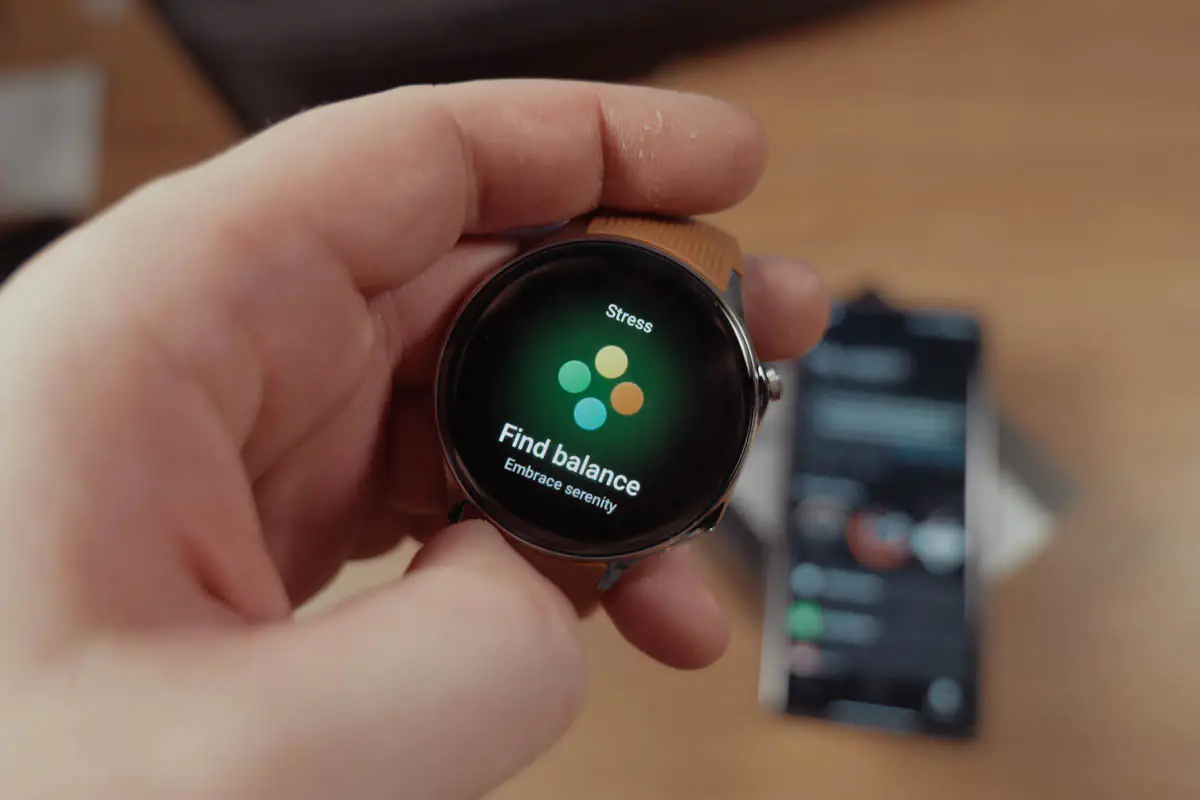
You can customize the menu order on the screen, install new apps, and the basic fitness tracking functions have been enhanced and expanded. The Oppo Watch X offers over a hundred workout modes. It automatically recognizes activities such as running, walking, cycling, swimming, and using elliptical or rowing machines.
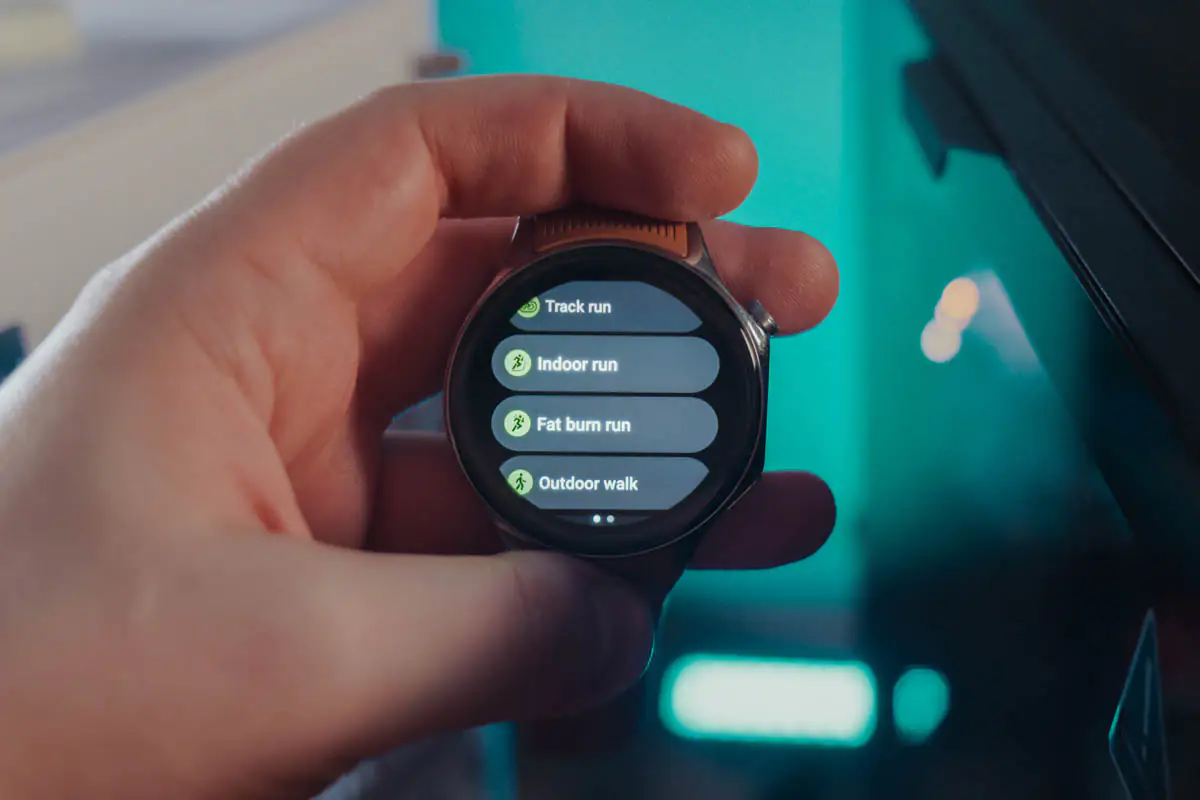
The calorie tracking has been enhanced, and there’s also an improved SpO2 monitor, along with tracking for cardiopulmonary capacity, recovery time, heart rate recovery speed, and running posture. There is significantly more in-depth tracking available for activities such as skiing, running, swimming, tennis, badminton, and more.
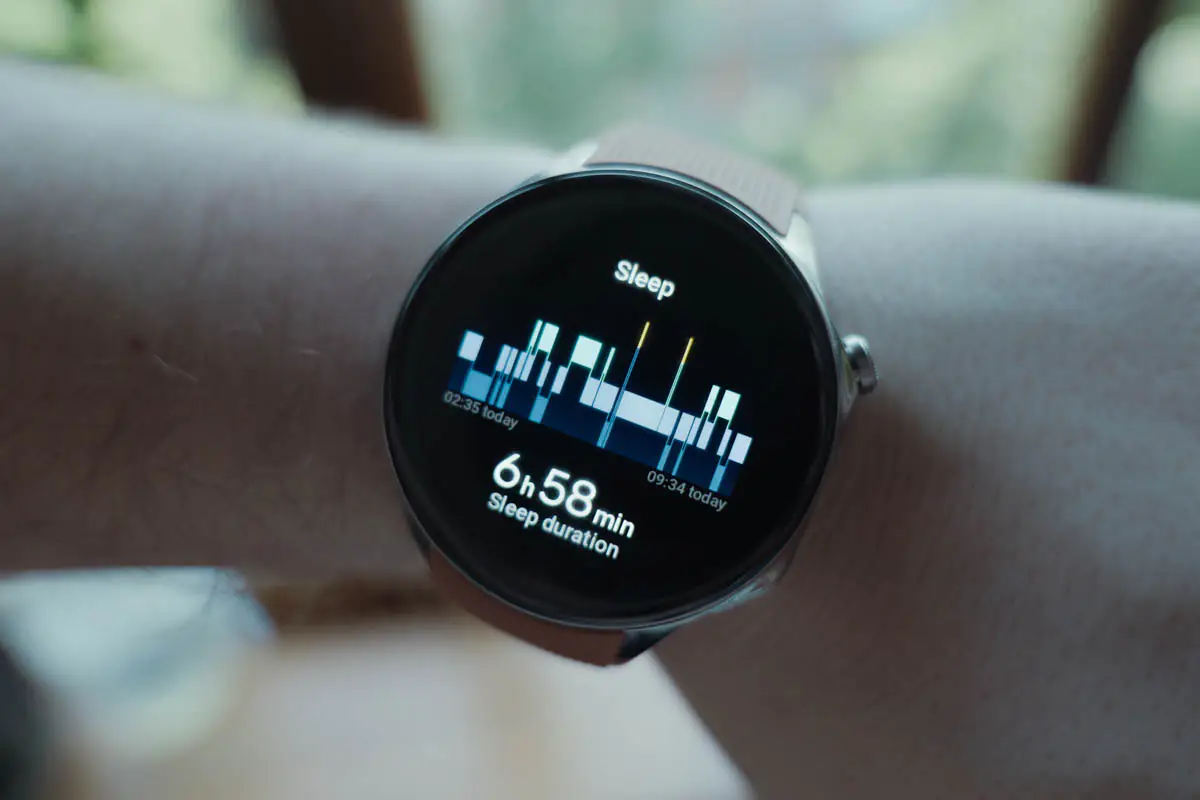
Want to use your watch as a music player? No problem. Want to use Google’s voice assistant? No problem.
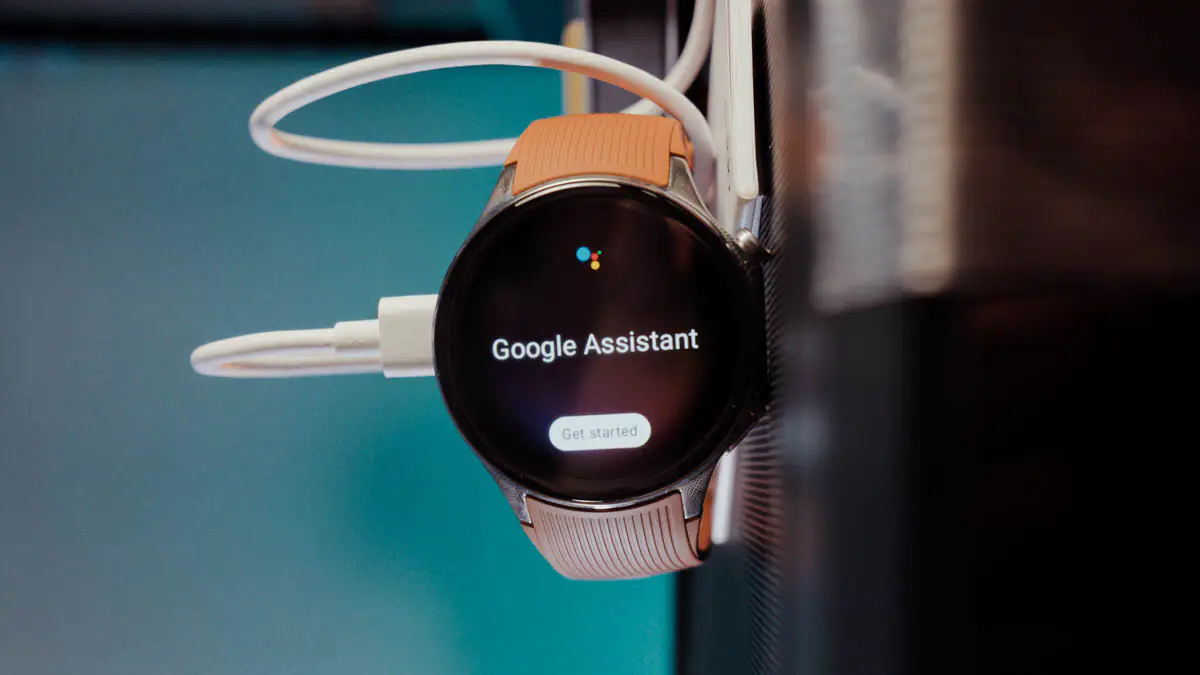
Yes, NFC is available. The watch is also customizable, including the option to choose from a variety of watch faces right out of the box. However, to fully unleash the potential of Wear OS, you’ll still need to use the proprietary software.
Software
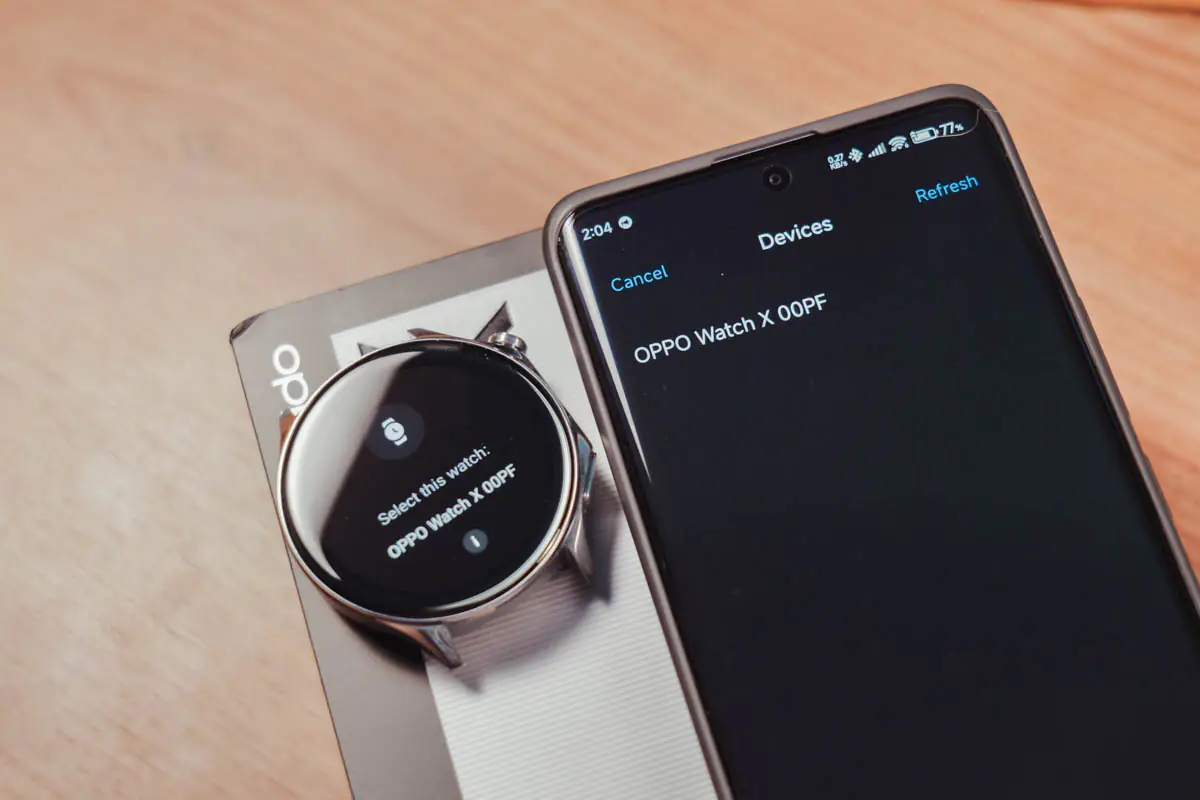 After installation and connecting to your smartphone, you’ll have three main features. Firstly, you can check your data and statistics—how far you’ve run, how many calories you’ve burned, your oxygen levels, and so on.
After installation and connecting to your smartphone, you’ll have three main features. Firstly, you can check your data and statistics—how far you’ve run, how many calories you’ve burned, your oxygen levels, and so on.
Secondly, there’s firmware updating. And thirdly, customization options. For example, you can change the order of the menu items on the watch. I didn’t mention this separately because this classic layout is also found on fitness bands. So, you have swipes left and right to open menu tabs, swipe down for quick access to settings, and press the rotating button to open the app list.
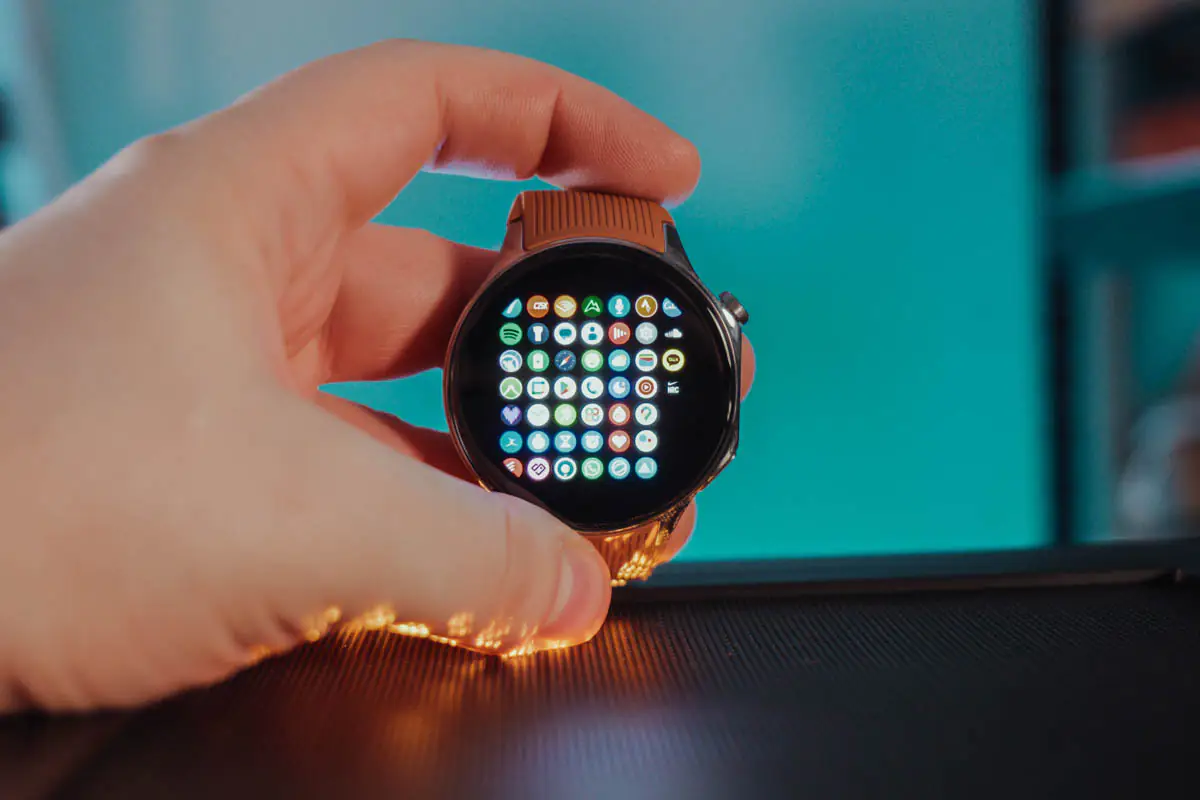 And that’s exactly what fitness trackers lack, along with the ability to install additional apps like messengers, music players, wallets, planners, and more on the Oppo Watch X via the smartphone app.
And that’s exactly what fitness trackers lack, along with the ability to install additional apps like messengers, music players, wallets, planners, and more on the Oppo Watch X via the smartphone app.
Why isn’t this available on fitness trackers? Firstly, a more powerful SoC is required, which doesn’t affect the accuracy of vital sign measurements—this depends more on sensors and software. Personally, I haven’t noticed Oppo Watch X misreporting my heart rate or blood pressure, but remember, it’s not a medical device.
Secondly, battery life.
Oppo Watch X battery life
The manufacturer claims that the Oppo Watch X can last up to 12 days in “basic” mode, if you just need a watch. If you’re using it as a smart watch, expect between 48 to 100 hours on a single charge. Personally, I got almost exactly 100 hours, meaning the 500 mAh battery drops by about 24% per day.
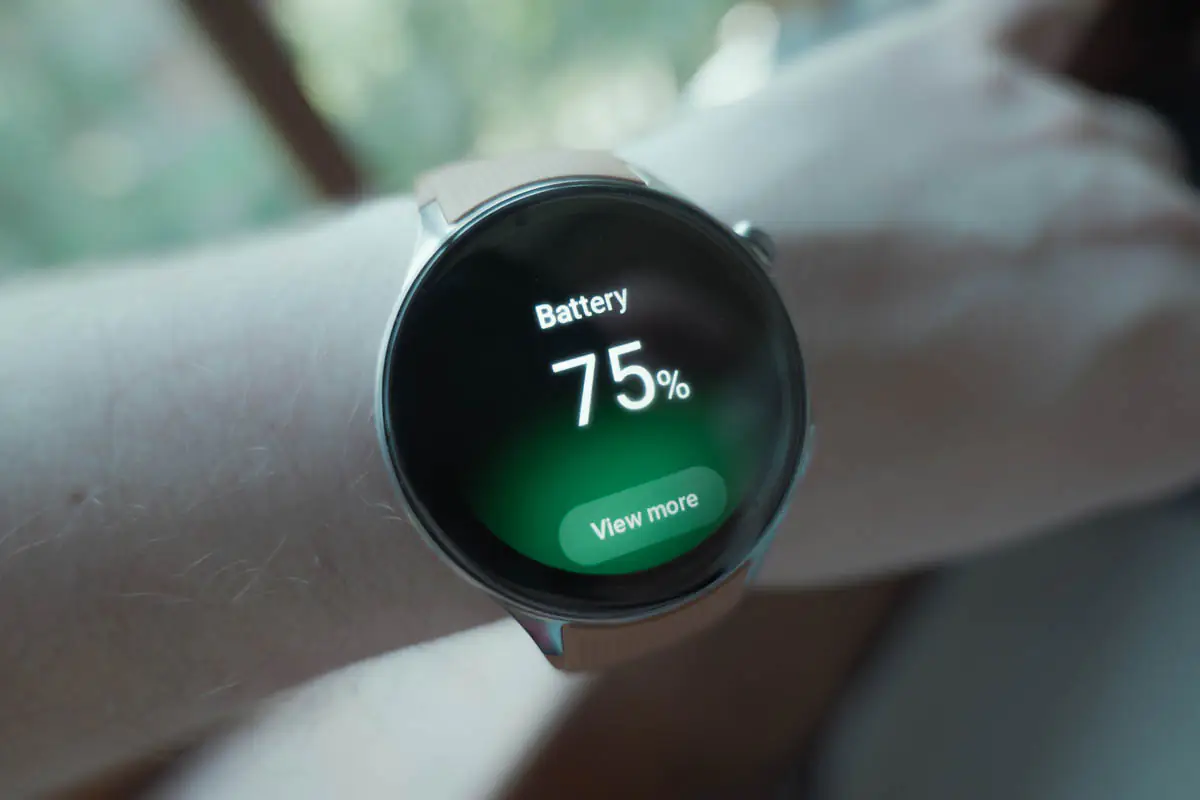
Regarding charging, there are minimal issues. It takes about an hour to fully charge the watch, and just 10 minutes of charging is enough to power it for a whole day. So, you can get a full day’s charge while having a coffee break. However, this is only with the proprietary charger, just a reminder.
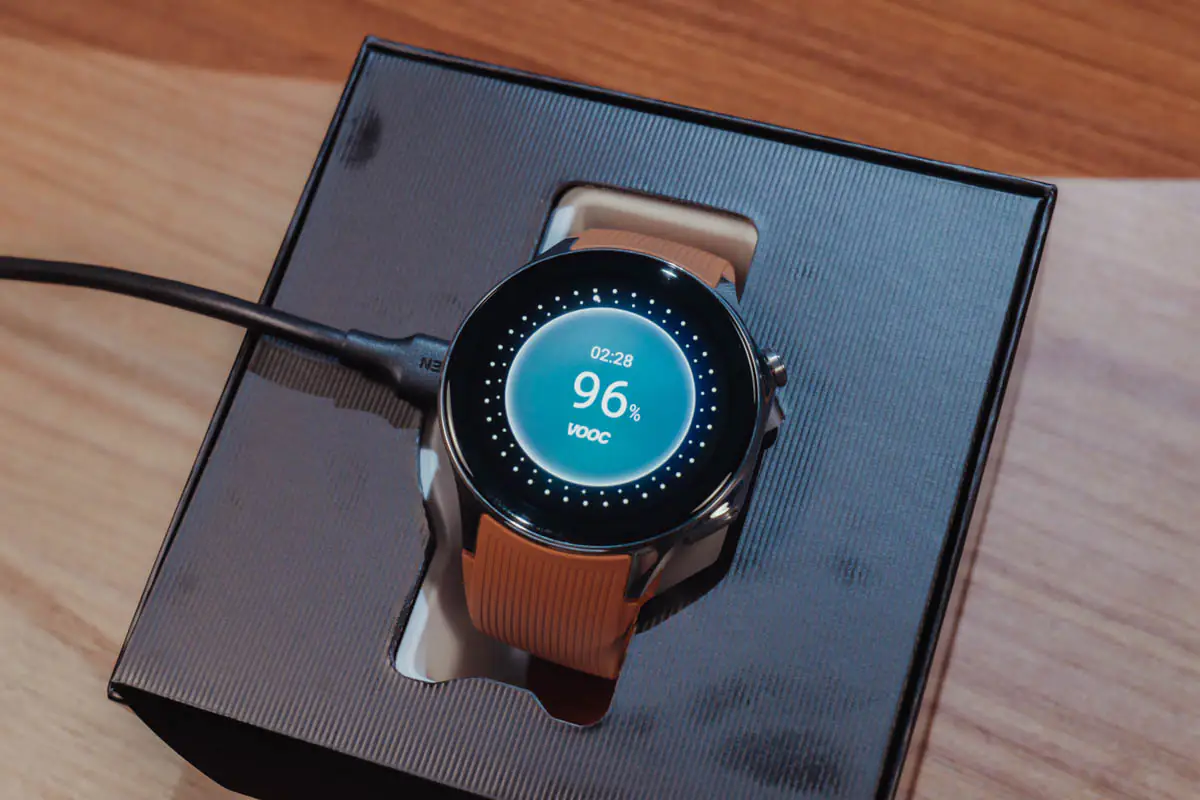
Overall, it’s worth noting that nearly every reviewer mentions Oppo Watch X. For a smartwatch with smartphone functionality, this model is exceptionally autonomous. It even sets a record in this regard. Just to remind you, the Apple Watch 9 has a battery life of 18 hours.
Conclusions
In my opinion, the progress of smartwatches, exemplified by the Oppo Watch X, is heading in a very promising direction. Functionally, it is a powerful, versatile, and convenient device. It’s stylish, reliable, and comes with an impressive set of sensors. But these features are almost standard in all smartwatches. What excites me is the focus on autonomy. A 100-hour battery life for such a device is truly impressive.
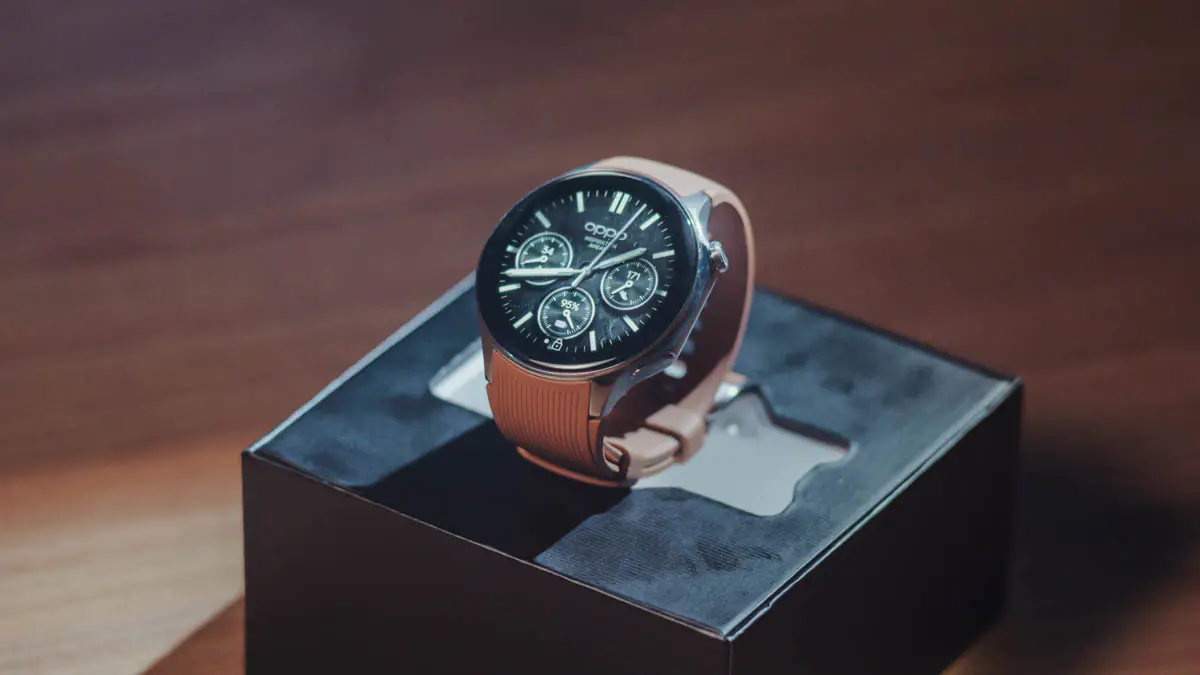
Yes, the Oppo Watch X doesn’t have eSIM, so it’s not a “smartphone detox” device. But as an accessory, it’s an excellent choice in every sense of the word.
What are its competitors? The Samsung Galaxy Watch 6 Classic, Samsung Galaxy Watch 7, Apple Watch SE 2023, and Google Pixel Watch 2 LTE. The prices are roughly similar, the functionality can be better in some areas, but the battery life is always shorter.
Read also:
- Huawei Watch Fit 3 Smartwatch Review
- Motorola Razr 50 Review: IPX8 Rating and Huge External Display
- ASUS ROG Cetra True Wireless SpeedNova Gaming TWS Earbuds Review


